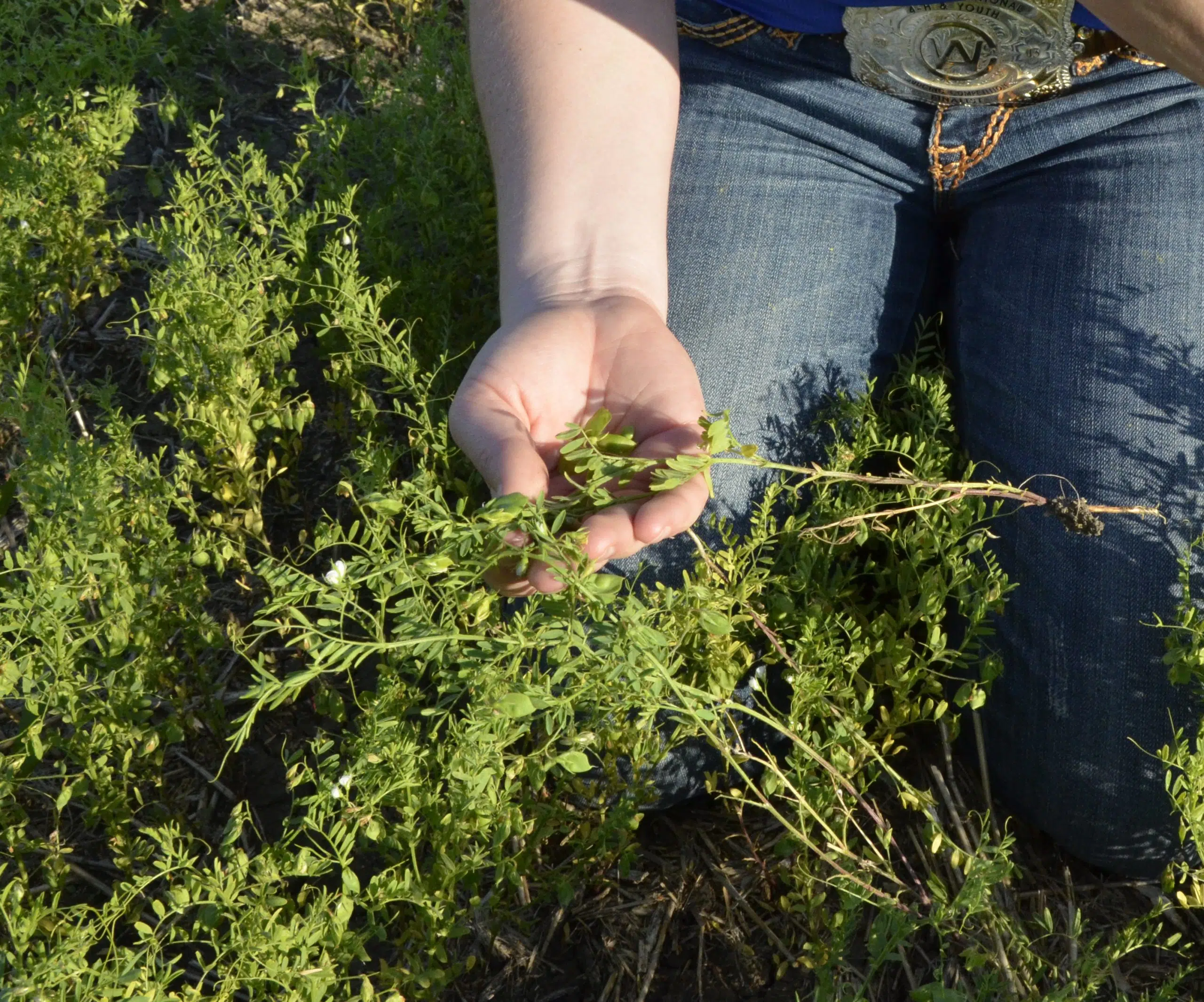
Many pulse crops are doing well with ample moisture—but root rot is being found in some fields.
Saskatchewan Pulse Growers Agronomy Manager Sherrilyn Phelps went on a lengthy crop checking tour last week, going from Gravelbourg in the south to Meadow Lake in the north.
“Crops range from starting to pod to mid-podding stage in southern regions to full flower as you get further north,” Phelps said. “Hopefully, the weather continues to be in the mid-20’s temperatures. We don’t want to see it get too hot because it would cause some flower blasting in the pulses.”
Unfortunately, there are reports of root rot which is typical after rain events. Peas and lentils are susceptible to wet conditions and that can result in aphanomyces. Most of the cases are in areas that have grown pulses over the past twenty years or more. Many producers have used a four year rotation, but that has not prevented root rot development.
“We are finding that four years is not enough once it’s (root rot) there. It is very frustrating for growers who are faced with this. The only solution we have at this point is go to a longer rotation,” Phelps said.
Following a confirmed case of aphanomyces, it is recommended not to seed peas or lentils for a period of 8 to 10 years.
There have been reports of anthracnose on lentils in southern areas of the province. Phelps says the next potential lentil disease issue could be botrytis or sclerotinia.
“Any time you get those lush, heavy canopies and then the humid conditions underneath, it is a great spot for those diseases to develop” she said.
Fababean is being monitored for chocolate spot. Samples are also being sent to the lab to determine if stemphylium is also an issue.
Chickpeas are being sprayed with fungicide to prevent sclerotinia. Phelps adds an unknown condition (tip dieback) is affecting chickpeas for the second straight year.
“Unfortunately, we are not exactly sure what is causing that. It seems to be exacerbated where you have dry conditions followed by heavy rains. It puts stress on the plants, but we don’t have a good explanation on what is exactly causing it, how to prevent it or how to treat it,” she said.





















